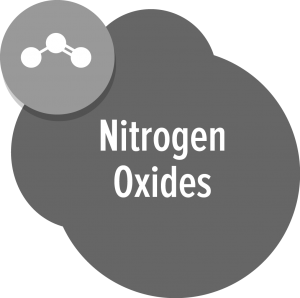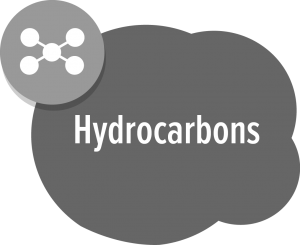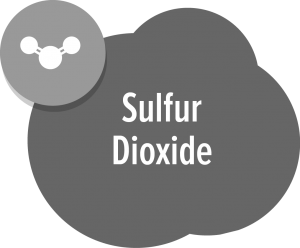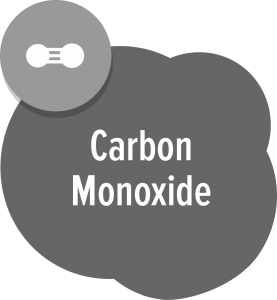What comes out of a tailpipe, anyway?
We’ve all been stuck behind one before. A car that clearly hasn’t passed a smog check in years, spewing smoke from its tailpipe like there’s no tomorrow. You probably know that the stuff coming out of there isn’t good for you, or the environment. But what exactly is it composed of?
For starters, there are two types of emissions that come out of a car’s tailpipe. The first kind are “criteria” and other harmful pollutants that are mainly responsible for smog and adverse health effects. The other kind are greenhouse gases that play a role in climate change. Today, we’ll be focusing on the former, and the effects they have on our air and our bodies. Let’s get started.
NOx (nitrogen oxides)
This is the nasty stuff that many diesel Volkswagen cars were emitting at up to 40 times the legal limit before the company got caught by regulators, and it has two problematic effects. First off, when inhaled, NOx can damage your lungs and increase your risk of respiratory infections. Long-term exposure can even lead to the development of asthma. Second, NOx interacts with other chemicals coming out of your tailpipe and in the air to create dangerous particulate matter — which we will cover in a bit — and smog. Oh, and did we mention it can cause acid rain? Thanks, Volkswagen!
HC (Hydrocarbons)
HC+NOx+sunlight=ozone. Now, ozone is a good thing in the upper atmosphere because it protects us from radiation from space. However, at ground level it’s problematic, causing lung issues and contributing to smog creation.
SO2 (Sulfur dioxide)
Even limited exposure to SO2 can make it hard to breathe and can hurt your respiratory system, especially if you’re very young, elderly, or have asthma. This chemical also contributes to particulate matter formation — I know, I know, we’ll get there.
CO (carbon monoxide)
Not to be dark, but you know when people commit suicide by leaving their car running in their garage? What ultimately kills them is CO. It decreases the amount of oxygen being transported to your brain and other organs, and at high levels is fatal. The good news is that concentrations high enough to kill you are very difficult to achieve outdoors. The bad news is that concentrations can get high enough outdoors to pose problems to people who have heart disease or are exercising.
PM10, 2.5 (Particulate matter)
Finally! I know you’ve been waiting. As mentioned above, PM can come from a variety of sources, like when NOx and SO2 interact with other chemicals in the air. It can also come from brake pads, roads, fires, sand, you name it. The number next to the PM represents the particles’ diameter in micrometers and PM can range from being big enough to see with the naked eye to being small enough to need an electron microscope to make out. And while some of the larger particles (PM10), aren’t overly harmful, smaller particles like PM2.5 and below can cause major health issues. Why? Because once PM gets small enough it can pass through the walls of your lungs into your bloodstream or through your olfactory nerve (the nerve that lets you smell) and into your brain. In your bloodstream, it can, according to the EPA cause “premature death in people with heart or lung disease, nonfatal heart attacks, irregular heartbeat, aggravated asthma, decreased lung function, increased respiratory symptoms, such as irritation of the airways, coughing or difficulty breathing.” In addition, there is a growing body of research that suggests PM exposure to the brain is harmful to the very young and the elderly by increasing the buildup of plaque. In the elderly this may increase the risk of dementia and accelerate cognitive decline. For babies in the womb, exposure may increase the risk of autism and ADHD. And with children it may contribute to neurobehavioral problems and lower IQ. Of all forms of air pollution, PM is arguably the most problematic and damaging.
Benzene and company (Aromatics)
When lead was phased out due to its myriad of damaging health effects, benzene and other aromatics like xylene and 1,3-butadiene began to be added to gasoline to replace lead as an octane booster. (Find out what is octane is and why it matters here.) However, while it’s less harmful than lead, benzene is a known carcinogen and is not safe to be exposed to. Even more frustrating is that we have the means of boosting octane with alcohol fuels like ethanol that emit fewer harmful chemicals.
So now you know what you’re breathing the next time you’re stuck in traffic behind that jerk who didn’t get a smog check. Our advice? In the short term, roll up your windows and hit the recirculate button to reduce your exposure. In the long term, support our mission for alternative fuels and more efficient vehicles that will make our air safer to breathe and our skies clearer.
Related posts:
- Your brain on air pollution
- Focus on lead’s dangers is a reminder of how far we’ve come with gasoline
- Why don’t we have solar-powered cars?
- What is octane?
- Why is the U.S. still dependent on foreign oil?


We need clean air to breath and a naturally clean environment to live in.
Thank you for sharing such type of informative post about the different types of hybrid cars. If we charge our cars from the electricity produced by burning hydrocarbon fuels, then it became meaningless to use an electric vehicle. According to the law of thermodynamics, there is a certain amount of energy loss takes place when energy is converted from one form to another form. So, there is the loss of energy as well as the increase in pollution takes place at the same time. So, if we can use wind energy or solar energy for charging electric vehicles, then it will act as a true Eco-friendly car. So initiatives should be taken in that direction. And another thing is that the cost of EV should be affordable for general public. Thank you again for sharing such type of unique post with us.
All those poisonous gases could make a healthy person sick. We know that these diesel consuming cars are emitting large amount of such poisonous gases, but we don’t try to do anything to stop it. Eco-friendly EVs are too expensive for general public to buy. If it’s cost became equivalent with the conventional car then it could be replace the conventional cars. By using such hydrocarbon consuming cars we not only affect the present generation but also making the atmosphere very difficult for living of our next generation. Thank you.